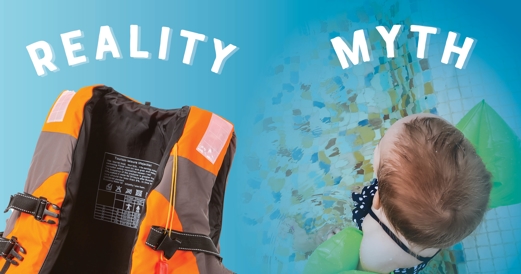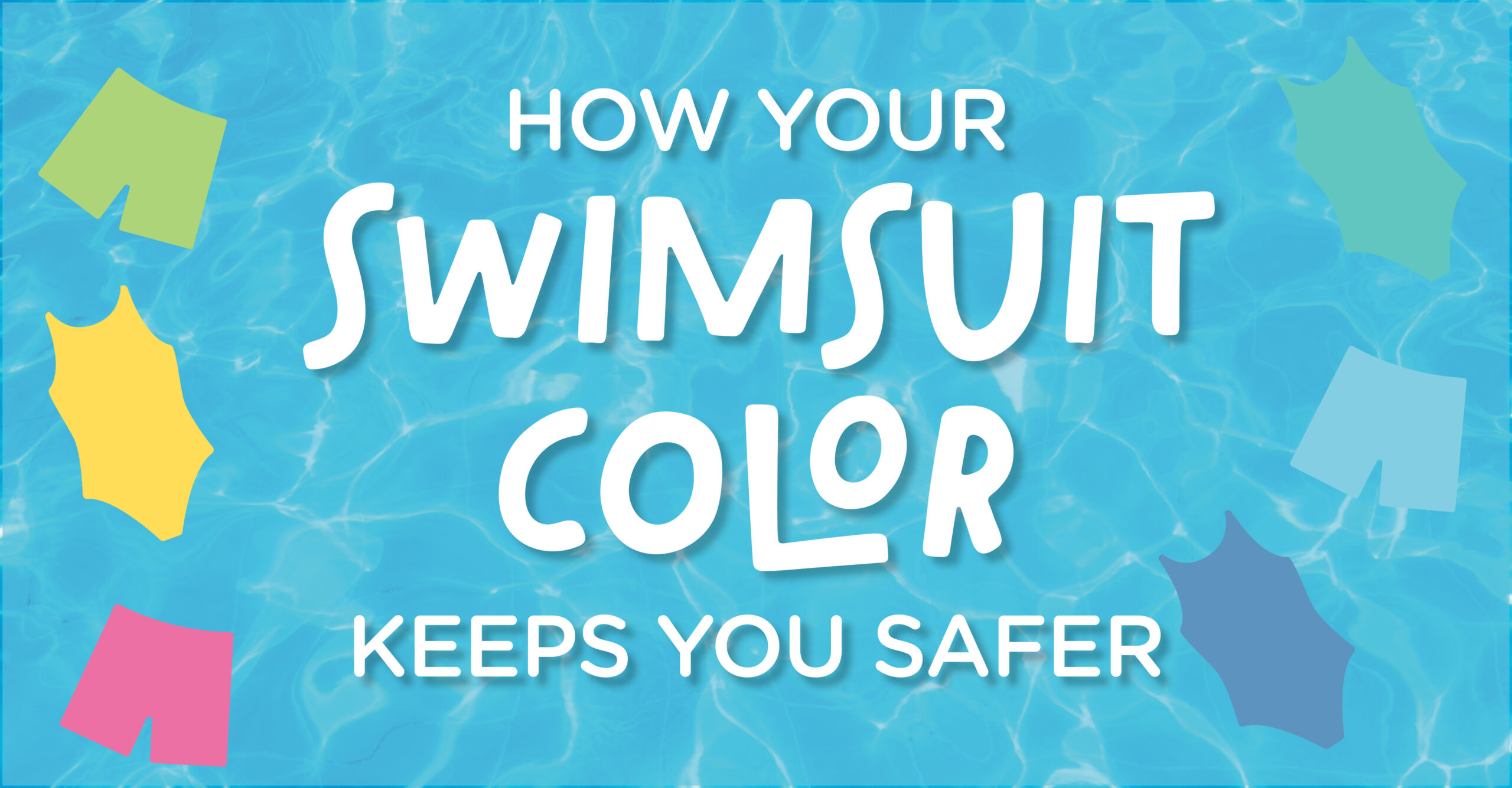8 Drowning Myths & Water Safety Tips from a Board-Certified Pediatrician

Spending time near the water can be a wonderful way to bond with friends and family, especially on long, hot summer days. However, a fun day splashing at the beach or pool can quickly turn into a tragedy if you don’t know what to do in an emergency.
Each year, 800 children die from drowning in the U.S., making it the leading cause of unintentional injury-related death for children ages 1-4, and the second leading cause of death for kids ages 5-14.
When it comes to water safety and drowning prevention, education is key! With warmer weather on the horizon, we invited our friend Dr. Molly, a board-certified pediatrician at Birmingham Pediatrics + Wellness Center, to share eight drowning myths and water safety facts parents should be aware of so they can keep their families safe this summer.
Myth #1: I’ll Know if Someone is Drowning Because They’ll Flail Their Arms & Yell for Help
Do you know what drowning looks like? If you’re picturing someone frantically flailing their arms and yelling for help, that’s simply not the case. Despite what you may have seen in the movies, drowning is often silent and can happen within the blink of an eye-making it hard to detect if you don’t know what to look for.
Learn how to recognize the signs of drowning and what you can do to stay safe in and around water
Myth #2: The More People There Are Around, The Less Likely Someone is to Drown
All it takes is a matter of seconds for someone struggling to swim to slip underwater. With so many people at public pools and beaches, surely someone would notice…right? Unfortunately, no! Even though there may be many people around, sometimes no one is actually watching swimmers.
This is why it’s so important to designate an adult “water watcher” to supervise the kids (without distractions!) any time they’re in, or near, water. Adults should take turns and trade off in this role periodically, but everyone should always know who the designated “water watcher” is. When it’s your turn to watch the water, don’t let anything distract you! In the time it takes to send a quick text, or post something on social media, a child could slip underwater. That split second could mean the difference between missing a drowning and saving a life.
Myth #3: As Long as There’s a Lifeguard on Duty, My Child Will Be Safe
While you should try to swim where there is a lifeguard present, you shouldn’t become lax when it comes to supervising your own kids at the beach, pool or lake. Remember, it only takes a matter of seconds for someone to slip under water. Even though lifeguards are trained to spot someone in need of help, they’re responsible for scanning a wide area of water, not watching each individual swimmer.
Myth #4: I Only Need to Worry About Water Safety When My Family is at the Pool or Beach
Because drownings that occur at swimming pools and beaches tend to make media headlines, most people are surprised to learn that more than 70% of drowning-related accidents actually occur in residential areas-making it just as important to practice water safety at home.
If you have a backyard pool, put up a four-sided fence to help prevent children from accessing it during non-swimming times, and install a pool alarm that can alert you any time there’s an unanticipated attempt to get in.
It’s also important to note that water doesn’t have to be deep to be dangerous. Even common household items, such as bathtubs, toilets and buckets of water can be a drowning hazard for young children. Here are some extra steps you can take to keep your family safe in and around water at home:
- Drain kiddie pools any time they’re not in use, and flip them over so they don’t collect water.
- Empty any buckets of water that may be lying around the house, or outside.
- Install child safety locks on bathroom doors and toilet lids.
- Never leave a child unattended in the bathtub.
Myth #5: If We’re Not Swimming, There’s No Risk of Drowning
As a parent, you know how quickly a child can get into something they’re not supposed to – like drawing a Sharpie masterpiece on the wall in the 60 seconds it takes you to use the bathroom. Children are curious, and it can be just as easy for them to wander somewhere they’re not supposed to be. It only takes a matter of moments for them to slip out of sight, and into the water.
The unfortunate reality is that the majority of drowning accidents take place during non-swimming times. In fact, 69% of drowning deaths for children under five happen when they aren’t expected to be swimming-a statistic this mom knows all too well. After losing her son Levi to a drowning accident while on a family vacation, she dedicated her life toward educating others about the dangers of drowning.
Read more: Drowning Risks When You’re Not Even Swimming
Myth #6: Puddle Jumpers, Floaties and Inflatable Pool Toys Will Keep Kids Safe
Not all floatation devices are created equal! These things are actually considered toys, not life-saving devices. In fact, most times, the words “Not a Lifesaving Device” are listed right on the label. And, dependency on these types of swimming aids can actually do more harm than good. Children who are accustomed to wearing puddle jumpers or water wings can gain a false sense of security in their own swimming abilities, thinking they know how to swim better than they actually do.
Only life jackets save lives! Look for one that is Coast Guard-approved, and make sure it fits your child properly. Have them raise their arms up over their head. Then, grab the top of the arm openings and gently pull upward. If it rises above their jawline, it’s too big.
That said, nothing is a substitute for adult supervision! Adults always need to be vigilant when supervising children in and around water, regardless of whether they’re wearing a life jacket or not.
Read more: Swimming Safety Q&A: Life Jackets, Puddle Jumpers And More
Myth #7: You Don’t Need a Life Jacket if You Know How to Swim
Factors like your child’s skill level, or the type of swimming environment, are important things to take into consideration when determining whether your child should wear a life jacket. As a parent, you know your child best! However, even if your little fish knows how to swim, there will be times when wearing a life jacket is a must for their safety.
Whether you plan on taking the boat out for a spin, going tubing or swimming in a body of open water (such as an ocean, lake or river), adults and children should always wear a properly fitted life jacket that’s Coast Guard-approved. Boating accidents do occur and water conditions can unexpectedly change. These situations can make it difficult for your loved ones to use their swimming skills, and wearing a life jacket can literally save their life!
Myth #8: Good Swimmers Don’t Have to Worry About Drowning
While swimming lessons are an important layer of drowning prevention (studies have shown they can reduce the risk of drowning by up to 88%), nobody is drown-proof-including professional athletes. Water can be unpredictable, especially open water, and rip tides, undertows and currents can be dangerous. This is why no one should ever swim alone! Even strong swimmers should have a swim buddy at all times, and there should always be a designated adult water guardian watching kids play any time they’re around water.
What You Can Do to Prevent Drowning & Keep Your Family Safer In and Around Water
The good news is, drowning is preventable! Have your family take Goldfish Swim School’s Safer Swimmer Pledge and talk to your kids about what it means to be safe in and around the water. Through awareness and education, we can all do our part to create a safer future for our children.
Swimming is a life-saving skill that can mean the difference between life and death should an accident occur. Help your child gain the skills they need to save themselves should a water emergency occur.
Dr. Molly O’Shea is a board-certified pediatrician and owner of Birmingham Pediatrics + Wellness Center in Bloomfield Hills, MI and Campground Pediatrics + Wellness Center in Washington Township, MI. Dr Molly has been in practice for over 25 years and has served at the state and national levels for the American Academy of Pediatrics. She was the ‘Ask the Pediatrician’ columnist for the Detroit News for many years and was a journal editor as well. Dr Molly is a lifelong swimmer, former triathlete, wife and mother.



